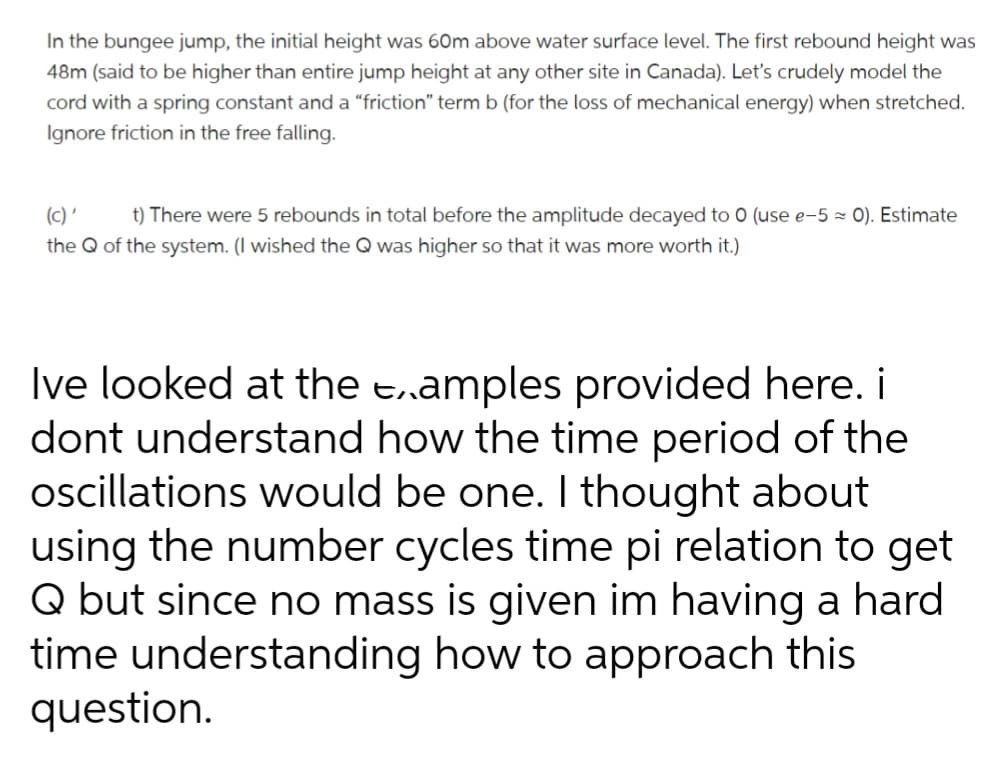In the bungee jump, the initial height was 60m above water surface level. The first rebound height was 48m (said to be higher than entire jump height at any other site in Canada). Let's crudely model the cord with a spring constant and a "friction" term b (for the loss of mechanical energy) when stretched. Ignore friction in the free falling. (c) ' t) There were 5 rebounds in total before the amplitude decayed to 0 (use e-5≈ 0). Estimate the Q of the system. (I wished the Q was higher so that it was more worth it.)
In the bungee jump, the initial height was 60m above water surface level. The first rebound height was 48m (said to be higher than entire jump height at any other site in Canada). Let's crudely model the cord with a spring constant and a "friction" term b (for the loss of mechanical energy) when stretched. Ignore friction in the free falling. (c) ' t) There were 5 rebounds in total before the amplitude decayed to 0 (use e-5≈ 0). Estimate the Q of the system. (I wished the Q was higher so that it was more worth it.)
Related questions
Question
Plz solve within 30min I vill give definitely upvote and vill give positive feedback

Transcribed Image Text:In the bungee jump, the initial height was 60m above water surface level. The first rebound height was
48m (said to be higher than entire jump height at any other site in Canada). Let's crudely model the
cord with a spring constant and a "friction" term b (for the loss of mechanical energy) when stretched.
Ignore friction in the free falling.
(c) '
t) There were 5 rebounds in total before the amplitude decayed to 0 (use e-5 ≈ 0). Estimate
the Q of the system. (I wished the Q was higher so that it was more worth it.)
Ive looked at the examples provided here. i
dont understand how the time period of the
oscillations would be one. I thought about
using the number cycles time pi relation to get
Q but since no mass is given im having a hard
time understanding how to approach this
question.
Expert Solution
This question has been solved!
Explore an expertly crafted, step-by-step solution for a thorough understanding of key concepts.
Step by step
Solved in 2 steps with 2 images
